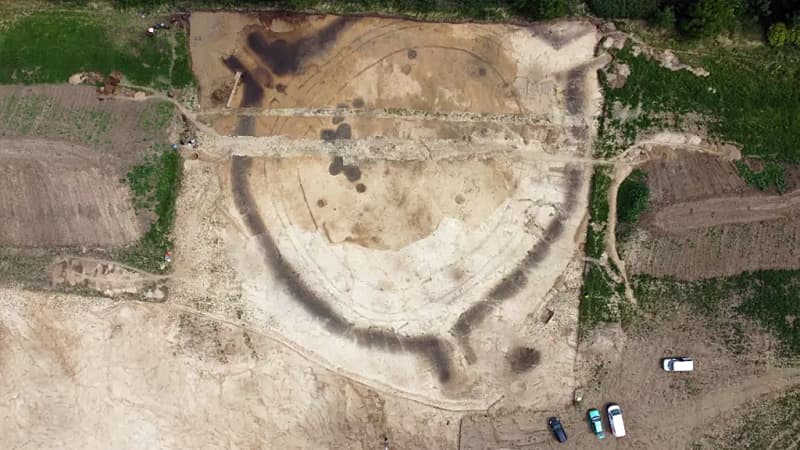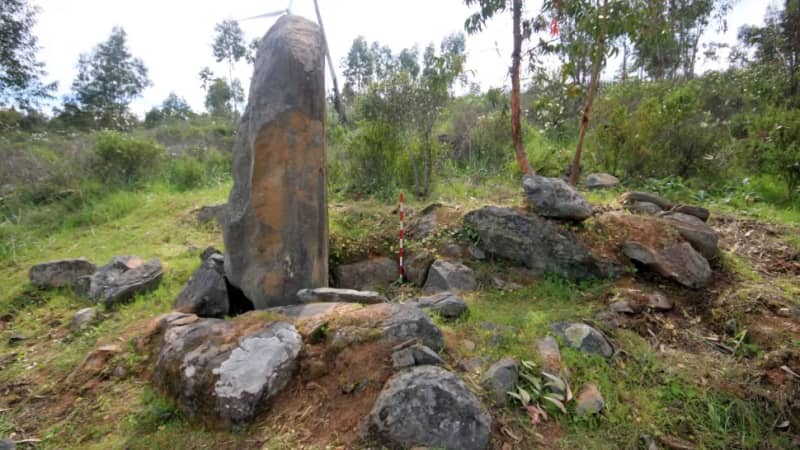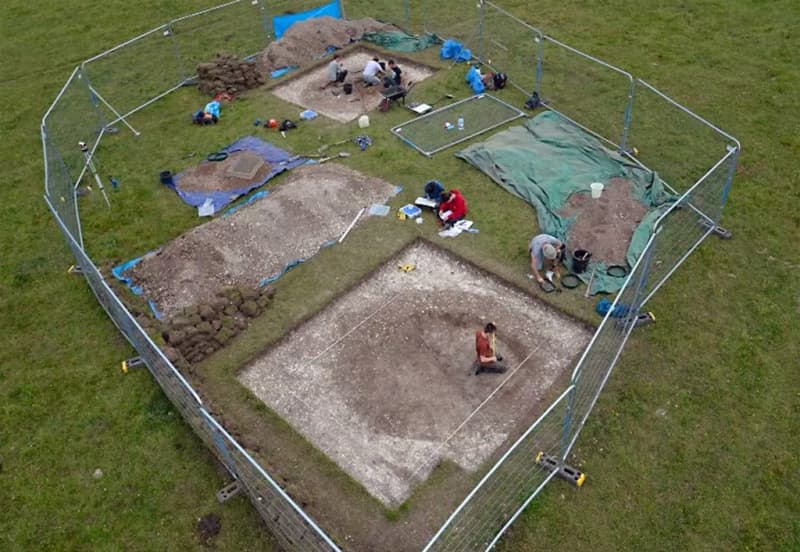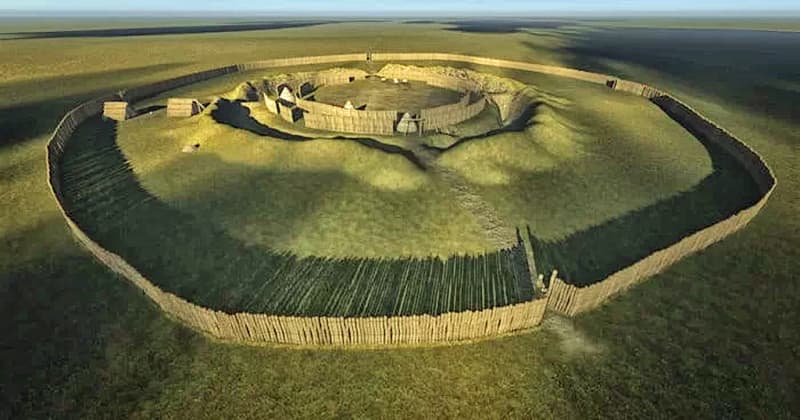Stone Age Europeans spent a lot of time and effort digging ditches and erecting flagstones for reasons that are hard to understand today. New discoveries may shed some light on what they had in mind.
A monument from the Neolithic Stone Age, which was in use a couple of thousand years before the first pyramids, has been found on the slopes of Prague in the Czech Republic. Europe’s most famous Stone Age structure, the stone circle of Stonehenge in England, is also clearly younger.
The Neolithic standing stone area found in southwestern Spain a few years ago – also much older than the Stonehenge slabs – has, in turn, proven to be even wider and more versatile in new studies.
Archaeologists hope that the structure located in Vinoř in the Czech Republic will provide clues as to what purpose the early European farmers built such areas seven thousand years ago.
Around their center was a circular ditch or several, sometimes even four, and picket fences with gates. The name referring to the circular shape of the structures could have been translated as rondell.
A total of a couple of hundred rondelles have been found in Central Europe, mainly in the Elbe and Danube river valleys in an area that is about 800 kilometers from one end to the other.
Roundels were definitely not made for fun, because their construction required a lot of effort from the community. Iron was not yet known, so the builders’ tools were stone and bone. In the excavations of Vinoř, stone tools as well as animal bones and pieces of pottery have been found.
Shop, church or both?
The most common assumption is related to religion. In Vinoř, too, rites related to the season or the life course of the community were performed, says Kraus.
– Rondells were probably built as gathering places where people celebrated important moments in their community, Řídký concludes on the LiveScience website.
The first rondell discovery seems to support that interpretation. Two of the three gates of the stilt fence found in Goseck, Germany in 1991 point to the directions from which the Sun rises during the summer and winter equinoxes.
In 2012, a US study published in the Archaeological Papers of the American Anthropological Association concluded that Goseck’s roundel was a calendar of its time.

Vinoř’s discovery has a diameter of 55 meters from the smallest end of the rondels. The most common measure is 60–80 meters. The ditches are usually one and a half meters wide.
The researchers have also found a rondell with a diameter of a whopping 240 meters, and the largest of the ditches are 14 meters wide and six meters deep, says Řídký.
The corner of Vinoř’s rondell was found in the 1980s, when gas and water pipes were buried in the area. In the excavations, which will continue until the end of September, it is planned to completely uncover the rondelle, to the extent that it has been preserved from thousands of years ago.
The studies have also taken samples for timing and other analyses.
Based on radiocarbon dating, the rondels were built for a fairly short time, between 4900 and 4600 before the start of our era. Then suddenly they were abandoned. The cause is unknown.
Kraus hopes that the exact age of Vinoř’s rondell can be determined from the samples. At the same time, it may be decided whether people lived in the Neolithic settlement found nearby at exactly the same time.
The avocado garden surprised me
A memory of Stone Age Europeans, even slightly older than rondelles, awaited archaeologists in southwestern Spain when they came to map the hillock where an avocado plantation was to be cleared at the end of the last decade.
Rumors had circulated among the people that there were megaliths in the La Torre-La Janera area near the Portuguese border, and that’s why the researchers went there. After finding a few, they decided to continue the surveys this decade.
The surprise was great: so far, a thousand stone shoes have been found, and researchers do not believe that to be the final number. The area is 600 hectares in size, and many of the stones are buried deep in the ground. It has been decided to continue the research until at least 2026.
526 of the flagstones are standing stones, either still standing or fallen to the ground. The others are arranged as the walls and ceilings of the coffins, as horizontal stones on top of two vertical stones, as frames and rows.
Such versatility in one region is very exceptional in Europe as a whole and unique in the Iberian Peninsula. The area has also been preserved in very good condition, which is a key factor when researchers are trying to find out the purpose of the structures.

Erecting megalithic monuments is thought to be a practice that came from the Middle East, which spread to Europe in waves with the new inhabitants.
The hill is an excellent vantage point near the mouth of the Guadiana River and the Atlantic shore. Researchers believe that the place was in use for more than three millennia. Along them, more and more new structures were built there.
Standing stones are displayed on top of a clustered hill in lines and circles to watch the sunrise during the summer and winter solstices and the spring and autumn equinoxes.
Based on the coffin constructions, the area was also used at least as a cemetery. No human remains have been found, but a thorough investigation of the graves is still ahead. On the other hand, the soil is so acidic that any bones may have disappeared without a trace a long time ago.
Although Stonehenge has undoubtedly been studied more thoroughly than any other prehistoric site, it too is revealing surprises with new research methods.
In a recently published study by a Belgian-British archeological team, the land use of the Stonehenge area was investigated since the last ice age receded and Britain was inhabited again.
Researchers from the universities of Ghent and Birmingham found plenty of pits in the limestone bedrock, which show how unexpectedly intensively the area was used from the Mesolithic Stone Age to the middle of the Bronze Age.
The construction of the Stonehenge stone monument is estimated to have started five thousand years ago. The oldest pit proves that the hunter-gatherers of the Mesolithic period began to exploit the earth more than five thousand years earlier.
The hole they found underground is four meters wide and two meters deep. The size and shape suggest that it was a big game trap pit. Big game animals at that time were, among other things, primordial bulls. They are extinct, but the current cattle are inferred to be their descendants.

Dating to 8200–7800 BC. makes the discovery one of the oldest man-made pits traced from northwestern Europe.
However, it is only one of more than 400 large and thousands of small pits found in the 2.5 square kilometer area, which the researchers concluded were human-made.
Over thousands of years, human activity at Stonehenge changed in many ways, but the concentration of pits in certain places shows that a good view of the whole area was always of interest, Journal of Archaeological Science (?Novel Insights into Prehistoric Land Use at Stonehenge by Combining Electromagnetic and Invasive Methods with a Semi-Automated A study published in the journal Interpretation Scheme.?) states.
The research combined the new electromagnetic means of geophysical mapping with the physical results of dozens of archaeological drillings and precision excavations.

